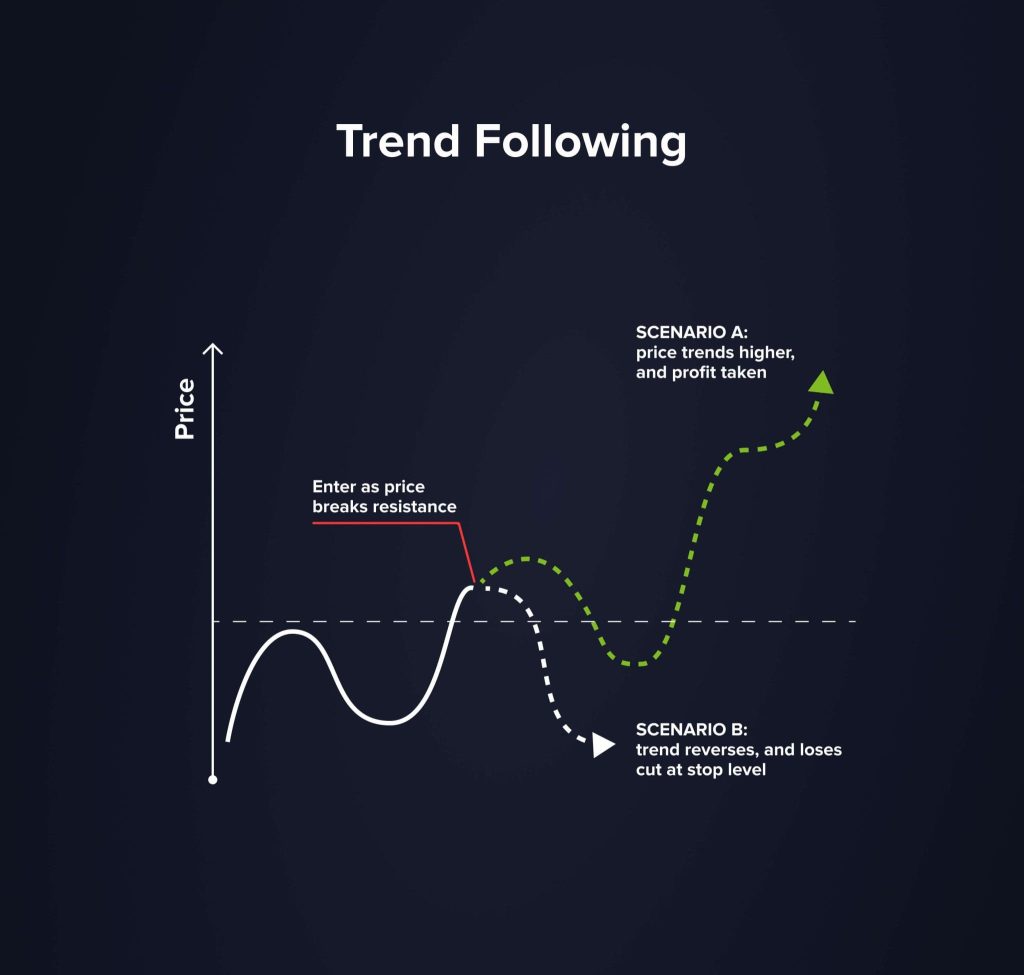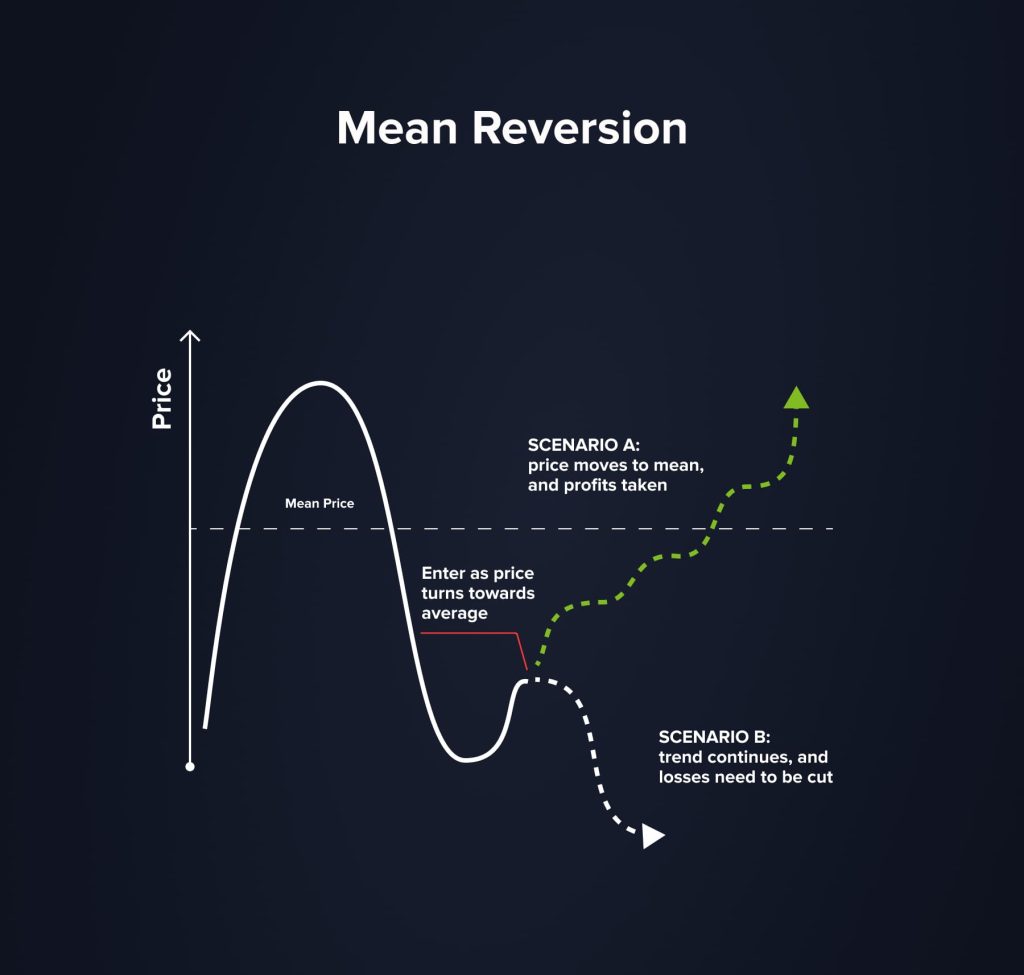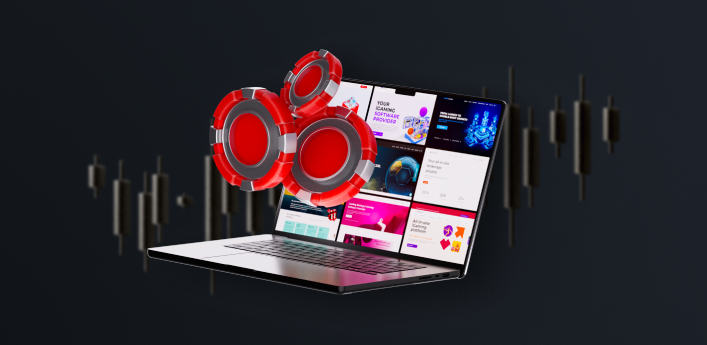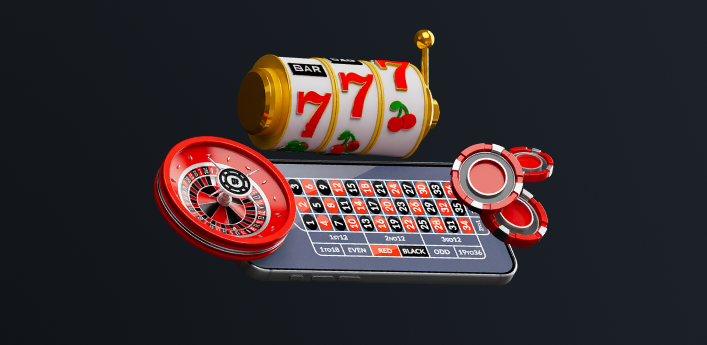
Top 15 Estrategias de Trading Más Populares en 2026
Contenidos
Las estrategias de trading son métodos para comprar y vender activos con disciplina, con la esperanza de ganar dinero pero también tratando de no perder demasiado. En 2026, los traders confían tanto en tácticas rápidas (como el scalping y el trading de momentum) como en estrategias a largo plazo (como el seguimiento de tendencias y el trading de posiciones).
En 2026, la tecnología será la principal diferencia.
Aún los traders minoristas ahora tienen acceso generalizado a flujos de datos en tiempo real, análisis asistido por IA y sistemas de ejecución de operaciones automatizadas, respaldados por avanzados indicadores de trading que ayudan a refinar los puntos de entrada y salida.
Aquí hay 15 estrategias populares, qué las hace especiales y cuándo funcionan mejor.
Los ABCs de las Estrategias de Comercio
Antes de hablar sobre las estrategias de trading populares en 2026, es esencial entender cuál es el propósito básico de cada estrategia de trading y por qué son importantes.
Una estrategia de trading es un plan detallado que guía a los traders en mercados en rápida evolución. Al seguir un conjunto de reglas específicas, los traders evitan tomar decisiones basadas en emociones y, en su lugar, utilizan lógica, datos y autodisciplina, un principio profundamente arraigado en la psicología del trading. Este enfoque claro ayuda a los traders a evitar decisiones impulsivas y a trabajar hacia el éxito constante.
Elegir la estrategia correcta es como elegir la mejor herramienta para un trabajo específico. Si estás invirtiendo a largo plazo, el trading de posiciones se trata de un crecimiento lento y constante durante meses o años, pero ahora generalmente mejorado con el seguimiento de cartera de IA. Para ganancias rápidas, podrías optar por trading diario o scalping, que son estrategias a corto plazo. Tu comodidad con el riesgo también importa. Los traders cuidadosos suelen apegarse a mercados familiares como el mercado de acciones o forex. Mientras tanto, aquellos con un mayor apetito de riesgo podrían explorar opciones más arriesgadas como acciones tecnológicas vinculadas a IA, criptomonedas o derivados de alto apalancamiento.
Es crucial entender las ideas principales de cada estrategia y ver cómo se ajustan a tus objetivos personales, la cantidad de tiempo que planeas invertir y tu nivel de comodidad con el riesgo. Conocer estos aspectos te ayudará a sentirte más seguro en los mercados. Las estrategias a continuación no están en un orden específico, pero cada una ha ganado su lugar entre los enfoques más utilizados y prácticos en 2026.
15 Estrategias de Trading Más Efectivas para 2026
Aquí tienes un resumen rápido de las 15 estrategias de trading más populares para 2026 antes de discutir cada una de ellas en detalle:
Day Trading – Compra y venta de activos durante el mismo día de negociación
Trading de Momentum – Capitaliza sobre movimientos de precios fuertes y volumen de negociación para aprovechar ráfagas cortas
Scalping – Ejecuta numerosas pequeñas operaciones durante el día para aprovechar movimientos de precio mínimos
Seguimiento de Tendencias – Identifica movimientos descendentes y ascendentes para las perspectivas de ganancias a largo plazo
Reversión a la Media – Cree que los precios tenderán hacia su promedio con el tiempo
Trading de Posición – Estrategia a largo plazo basada en las principales tendencias del mercado y fundamentos
Arbitraje – Aprovecha las diferencias de precio del mismo activo en diferentes plataformas. Las formas comunes incluyen arbitraje triangular en los mercados de divisas o criptomonedas.
Trading de Swing – Se enfoca en los movimientos de precios a medio plazo a lo largo de días o semanas a través del análisis técnico
Trading de Alta Frecuencia – Realiza miles de operaciones en menos de segundos a través de algoritmos
Pair Trading – Compra en largo un activo y en corto el otro, generalmente en activos correlacionados
Creación de Mercado – Cotiza simultáneamente precios de compra y venta, inyectando liquidez
Promedio de Costos en Dólares – Invierte cantidades fijas independientemente de las fluctuaciones de precios
Estrategias de Opciones – Aplica instrumentos como opciones de compra cubiertas o spreads para gestionar el riesgo y la recompensa
Trading de ruptura – Entra en posiciones cuando el precio supera los niveles de resistencia/soporte
Trading de Noticias – Reacciona a eventos y noticias económicas para capturar movimientos del mercado
Rápido (segundos a horas):
- Scalping
- Operar en el día
- Comercio de noticias
- Comercio de momentum
- Trading de ruptura
Mediano (días a semanas):
- Trading de oscilación
- Reversión a la media
- Comercio de pares
Largo plazo:
- Seguimiento de tendencias
- Trading de posición
- Promedio del costo en dólares
- Estrategias de opciones
- Arbitraje (corto pero también utilizado estratégicamente)
- Creación de mercado
- Comercio de alta frecuencia
También podemos tener una tabla de pros y contras para al menos 3 estrategias (ej: Day Trading, Swing, DCA).
Trading Diario
El day trading es la práctica de comprar y vender activos el mismo día para beneficiarse de pequeñas fluctuaciones en el precio. Evita amenazas repentinas de eventos o noticias.
Por qué funciona en 2026:
Datos en tiempo real, ejecución rápida, gráficos sofisticados y alertas de IA son características de las plataformas modernas que facilitan el reconocimiento de patrones y la acción rápida.
Cuida con esto:
- Alto rendimiento, alto riesgo.
- Requiere gestión de riesgos, disciplina y juicios rápidos.
- No recomendado para principiantes sin una estrategia.
Consejo: Opera durante períodos de alta liquidez y utiliza stop-losses ajustados. Para controlar mejor el riesgo durante fluctuaciones intradía abruptas, piensa en implementar filtros de volatilidad o sistemas de stop-loss dinámicos basados en IA.
Trading de Momentum
El trading de momentum implica comprar activos en alza y vender los que están en baja, muy parecido a surfear una ola. El concepto es que, al menos a corto plazo, cualquier cosa que se mueva en una dirección probablemente continuará.
Por qué funciona en 2026:
Las herramientas de IA y los datos en tiempo real aceleran la capacidad de los traders para identificar cambios de precio, muy parecido a los sistemas de trading algorítmico que detectan ráfagas de impulso antes que los traders humanos. Funciona bien en mercados con mucha volatilidad y titulares, como tecnología, criptomonedas, infraestructura y energía limpia, donde los aumentos de precios a menudo siguen a titulares importantes o cambios en políticas.
Cuidado con esto:
- Indicadores engañosos en mercados laterales.
- Reversiones abruptas, que pueden ocurrir después de la publicación de datos macro - tener prácticas de cobertura sólidas ayudará.
- Dependencia excesiva de señales anteriores - monitorear constantemente el volumen y las últimas noticias.
Consejo: Utiliza stop-losses de arrastre para asegurar ganancias sin romper una tendencia fuerte. Para verificar la fuerza del momentum, combina el análisis de volumen convencional y RSI con indicadores de sentimiento de IA (derivados de datos de noticias o sociales).
Escalping
El scalping es una técnica de trading rápida que se centra en diferencias de precios menores provocadas por spreads o movimientos de órdenes. Los scalpers monitorean constantemente los datos del libro de órdenes para detectar estos micro-movimientos en tiempo real. Las operaciones duran segundos o minutos, con el objetivo de obtener ganancias rápidas y modestos.
Por qué funciona en 2026:
El scalping sigue siendo común debido a su rápida ejecución y enormes mercados líquidos (como el de divisas). La tecnología facilita la identificación de micro-movimientos.
Los sistemas de ejecución impulsados por IA y los corredores de baja latencia con márgenes casi nulos aumentan su eficacia en 2026. Para identificar desequilibrios transitorios, los traders ahora emplean IA de libro de órdenes en tiempo real y análisis de microestructura.
Para los scalpers que buscan un movimiento de precios constante, las extensiones de mercado tokenizadas (como los activos sintéticos 24/7) y la volatilidad de las criptomonedas también ofrecen nuevas oportunidades.
Cuidado con:
- La toma de decisiones rápida y mucho tiempo frente a la pantalla son necesarios.
- Los costos de corretaje pueden acumularse, especialmente si el spread en el trading se amplía durante períodos de volatilidad.
- Funciona mejor con plataformas de trading económicas.
También te puede gustar

Consejo: El scalping se trata de velocidad y precisión. Seleccione plataformas y momentos con diferenciales ajustados y alta liquidez. Para reducir el deslizamiento, opere durante períodos de alta liquidez, utilice corredores con ejecución en la nube o co-localización de servidores, y confíe en monitores de latencia de IA.
Seguimiento de Tendencias
La idea básica detrás del seguimiento de tendencias es seguir los movimientos del mercado, ya sean hacia arriba o hacia abajo, y permanecer en la operación mientras el patrón continúe.

Por qué funciona en 2026:
Las herramientas de sentimiento en tiempo real y los gráficos impulsados por IA facilitan la identificación de patrones confiables en materias primas, criptomonedas y acciones. Los gráficos impulsados por IA y las herramientas de sentimiento en tiempo real hacen que sea más sencillo identificar patrones confiables en acciones, materias primas y criptomonedas, especialmente para los traders que utilizan estrategias de trading de ETF para monitorear las tendencias generales del mercado.
Esta estrategia gana constantemente tracción debido a las tendencias a largo plazo que han surgido en torno a temas como la normalización de las tasas de interés, la demanda de energía renovable y la expansión de la infraestructura de IA.
Con el fin de encontrar un impulso direccional consistente a través de una variedad de clases de activos, incluyendo acciones, materias primas e índices tokenizados, los comerciantes ahora emplean agregadores de sentimiento de IA y modelos de regresión de aprendizaje automático.
Presta atención a:
- Falsas rupturas.
- Entradas tardías que reducen el beneficio.
- Requiere confianza y paciencia al enfrentar pequeños contratiempos.
Consejo: Evita seguir tendencias en mercados inestables; en su lugar, emplea esta estrategia cuando el precio esté impulsado por un momentum aparente o eventos significativos. Para ayudar a diferenciar entre picos de precios a corto plazo y movimientos estructurales reales, combina el seguimiento de tendencias con filtros de volatilidad de IA o paneles de sentimiento macro.
Reversión a la Media
La idea detrás de la reversión a la media es que los precios eventualmente se estabilizarán de nuevo en su media histórica. Los traders compran por debajo de la media y venden por encima de ella para obtener ganancias cuando los precios se normalizan.

Por qué funciona en 2026:
La representación gráfica moderna simplifica la identificación de posiciones sobrecompradas o sobrevendidas, particularmente en mercados con rango limitado.
A medida que los mercados entran en ciclos de normalización post-restricción en 2026, las estrategias de reversión a la media están viendo un resurgimiento en popularidad. Muchos activos exhiben oscilaciones más estables en lugar de movimientos bruscos en una sola dirección, lo que es ideal para esta estrategia, ya que se predice que las tasas de interés disminuirán gradualmente.
Más precisas que las Bandas de Bollinger tradicionales, las plataformas de trading modernas ahora cuentan con bandas de volatilidad calibradas por aprendizaje automático y herramientas de detección de rangos con IA para ayudar a identificar niveles de sobrecompra o sobreventa.
La estrategia funciona particularmente bien en los mercados de materias primas y de divisas, donde las correcciones cíclicas son predecibles.
Cuidado con:
- Los eventos importantes de noticias pueden romper patrones.
- No funciona de manera efectiva en mercados de tendencia.
- Las herramientas de IA pueden interpretar cambios estructurales como anomalías a corto plazo.
Sugerencia: Utiliza stop-losses en caso de que el precio se desvíe de la media y permanezca en mercados laterales.
Trading de Posición
En el trading de posición, los activos se mantienen durante semanas, meses o incluso años. Se utilizan métodos técnicos para cronometrar entradas y salidas, pero el análisis fundamental es su principal soporte.
Por qué funciona en 2026:
Los traders de largo plazo pueden tomar mejores decisiones en los mercados si tienen acceso a datos macroeconómicos en tiempo real, informes de ganancias y herramientas de sentimiento. Los fundamentos sólidos son preferibles al ruido a corto plazo para los traders de posiciones a medida que los bancos centrales entran en ciclos de recortes de tasas y las industrias impulsadas por la IA (como los semiconductores, la tecnología verde y la robótica) moldean las tendencias a largo plazo.
Con el fin de ayudar a los inversores a alinear sus posiciones con los cambios en la economía y los ciclos de ganancias, muchas plataformas ahora incorporan modelos de pronóstico macroeconómico de IA y rastreadores de ganancias automatizados.
Más allá de las acciones tradicionales, los activos tokenizados y los mercados internacionales disponibles las 24 horas han hecho que las posiciones diversificadas a largo plazo sean más accesibles.
Cuidado con:
- La paciencia y un fuerte sentido de convicción son necesarios para períodos de tenencia prolongados.
- Aunque a menudo se ignora, la volatilidad a corto plazo es, no obstante, esencial para mantenerla en la mira.
Consejo: Es más efectivo cuando está respaldado por fundamentos sólidos y una tendencia de mercado a largo plazo distinta. Mantén un ojo en las tendencias que serán impulsores significativos a largo plazo en 2026, particularmente aquellas relacionadas con la adopción de IA, mejoras en la infraestructura y cambios globales en la energía.
Arbitraje
El arbitraje es la práctica de comprar un activo en un mercado a un precio con descuento y venderlo en otro a un precio premium con el fin de beneficiarse de la diferencia.
Por qué funciona en 2026:
A pesar de que la mayoría de las diferencias de precio se cierran rápidamente, todavía hay oportunidades de arbitraje en 2026 gracias a los avances en las herramientas de detección de latencia de IA, activos tokenizados y comercio entre intercambios.
Aún hay ligeras diferencias de precio entre las criptomonedas y los intercambios descentralizados, particularmente durante momentos de alta volatilidad o migración de liquidez.
Las stablecoins negociadas en FX y las mercancías sintéticas, donde los mecanismos de precios aún no están a la par en todos los lugares, también han presentado nuevas oportunidades para los mercados tradicionales.
Anteriormente imposible para los traders manuales, los bots de IA ahora pueden escanear múltiples intercambios en tiempo real para encontrar micro-precios incorrectos antes de que cierren. Utiliza escáneres de IA entre diferentes plataformas y servidores VPS de baja latencia para minimizar el retraso.
Cuidado con:
- Los retrasos pueden eliminar las ganancias; por lo tanto, el tiempo es crucial.
- La deslizamiento y las tarifas podrían reducir las ganancias.
También te puede gustar

Consejo: Para tener una mayor probabilidad de detectar diferencias de precios, concéntrate en los mercados con movimientos de precios más lentos o volúmenes de comercio más pequeños.
Swing Trading
Como un compromiso entre el trading diario y el trading de posición, el swing trading busca aprovechar los cambios de precio a corto y mediano plazo, que generalmente ocurren durante unos pocos días a varias semanas.
Por qué funciona en 2026:
Permite a los traders utilizar niveles de soporte y resistencia para entradas y salidas esenciales, lo que les permite responder a las tendencias del mercado sin el estrés de tomar decisiones inmediatas. Se beneficia del análisis de agrupamiento de volatilidad, mapeo predictivo de soporte/resistencia y reconocimiento de patrones de gráficos asistido por IA en 2026, lo que ayuda a una identificación más precisa de las zonas de entrada y salida.
La estrategia tiene un rendimiento especialmente bueno en activos de criptomonedas de gran capitalización, mercados de energía y sectores de acciones impulsados por IA donde surgen patrones de oscilación distintos en respuesta a noticias macroeconómicas, cambios en la liquidez y anuncios de ganancias.
Cuidado con:
- Demasiado rápido para los inversores a largo plazo y demasiado lento para los operadores de día.
- Solicitudes de paciencia y un momento estratégico.
- Rinde mejor en mercados que están en tendencia o algo inestables.
Consejo: Perfecto para traders con poco tiempo que, sin embargo, desean beneficiarse de los movimientos del mercado utilizando configuraciones organizadas. Combina escáneres de señales basados en IA con indicadores de swing clásicos como las medias móviles.
Comercio de Alta Frecuencia (HFT)
El comercio de alta frecuencia se aprovecha de las variaciones de precios mínimas en los mercados al realizar miles de órdenes en milisegundos utilizando algoritmos robustos.
Por qué funciona en 2026:
La ejecución ultrarrápida de HFT y su baja latencia en los sistemas de trading le permiten mantener su dominio en el mercado de acciones.
Una vez restringido a acciones, el HFT ahora se está expandiendo hacia bonos tokenizados, activos digitales y arbitraje entre plataformas, todos los cuales aún exhiben ineficiencias micro-precios.
Las empresas ahora pueden modificar dinámicamente la exposición en tiempo real gracias a la creciente integración de módulos de control de riesgos de IA, lo que reduce el riesgo de caídas repentinas que eran predominantes en años anteriores.
Cuidado con:
- Puede resultar en "crashes repentinos" o volatilidad.
- No disponible para traders individuales - principalmente institucional.
- Exige una estricta adherencia a las regulaciones y una infraestructura sofisticada.
Consejo: Aunque es poco práctico para los traders individuales, entender el HFT ayuda a explicar varias de las rápidas fluctuaciones de precios en los mercados contemporáneos.
Comercio de pares
El trading de pares es la práctica de comprar un activo históricamente conectado y vender otro en corto para obtener ganancias cuando la diferencia de precio entre los dos se cierra.
Por qué funciona en 2026:
Este enfoque es beneficioso en mercados alcistas y bajistas, ya que es neutral al mercado, particularmente con la amplia disponibilidad de bots de arbitraje estadístico y herramientas de seguimiento de correlaciones impulsadas por IA.
Además de acciones y ETFs, los traders ahora utilizan esta estrategia para activos tokenizados, acciones del sector de IA y pares de commodities que representan el tema de la transición energética, como los futuros de litio frente a níquel.
Ten cuidado con:
- Necesita un análisis de correlación preciso.
- La divergencia puede durar más tiempo del anticipado.
- Funciona mejor con pares líquidos y de baja volatilidad.
Consejo: Antes de operar, verifica el enlace utilizando retrocesos y métricas de correlación. Concéntrate en activos dentro del mismo sector para mantener relaciones lógicas, como Nvidia vs. AMD.
Creación de Mercado
Los creadores de mercado garantizan la liquidez del mercado mientras obtienen ganancias del diferencial entre la oferta y la demanda al cotizar tanto precios de compra como de venta.
Por qué funciona en 2026:
Los creadores de mercado, que a menudo obtienen ingresos consistentes de los márgenes, mantienen el flujo de comercio, particularmente en activos menos líquidos o durante tiempos de volatilidad.
Nuevas oportunidades para la creación de mercados en cadena, donde los proveedores de liquidez reciben tarifas en activos tokenizados y stablecoins, también se han hecho posibles gracias al crecimiento de las finanzas descentralizadas (DeFi).
Cuidado con:
- El inventario no deseado puede surgir de fluctuaciones de precios significativas y rápidas.
- Requiere gestión de riesgos continua y cambios de precios.
Consejo: Aunque se utiliza principalmente por instituciones, el conocimiento sobre el mercado de creación de liquidez ayuda a explicar la dinámica de los spreads y la estabilidad de precios.
Utiliza herramientas de panel de volatilidad de IA/predicción de spreads para programar órdenes limitadas de manera más eficiente, especialmente durante anuncios de alto impacto.
Promedio de Costo en Dólares (DCA)
La promediación del costo en dólares implica invertir una cantidad fija a intervalos regulares, independientemente de las condiciones del mercado, comprando más a precios bajos y menos a precios altos.
Los inversores ahora pueden aumentar automáticamente los tamaños de las contribuciones para preservar el poder adquisitivo real con herramientas de DCA ajustadas a la inflación.
Con el fin de ofrecer a los inversores una exposición más diversificada, también se está utilizando DCA en áreas distintas a las acciones, como ETFs tokenizados, bienes raíces fraccionados y fondos de índices de criptomonedas.
Por qué funciona en 2026:
DCA es perfecto para inversores a largo plazo y pasivos, ya que ayuda a suavizar la volatilidad y reduce la posibilidad de un mal momento en el mercado.
Cuidado con:
- Menos exitoso en mercados que están en rápida expansión.
- Funciona mejor durante períodos prolongados y no garantiza ganancias.
Consejo: Para crear riqueza de manera gradual y sin estrés, automatiza el DCA con inversiones periódicas en acciones, ETFs o criptomonedas. Para disminuir la dependencia de un solo ciclo de mercado en 2026, considera incorporar carteras de DCA de múltiples activos (acciones, criptomonedas y materias primas).
Estrategias de Opciones
Las opciones otorgan a los traders el derecho, pero no la obligación, de comprar o vender un activo dentro de un período de tiempo determinado y a un precio predeterminado. Dichas estrategias incluyen opciones simples de compra y venta, así como configuraciones más complejas como los "iron condors" o los "straddles".
Por qué funciona en 2026:
Con más comerciantes teniendo acceso a plataformas de bajo costo y recursos instructivos, las opciones ofrecen flexibilidad en la cobertura, especulación y mejora del apalancamiento.
Las herramientas que emplean la optimización de griegos en tiempo real y la previsión de volatilidad mediante aprendizaje automático ayudan a los traders a desarrollar estrategias más precisas.
La gama de estrategias basadas en opciones también se ha ampliado más allá de las acciones tradicionales debido a la popularidad de los ETFs de volatilidad, opciones tokenizadas y derivados sectoriales vinculados a la IA.
Cuidado con:
- La complejidad aumenta el riesgo.
- Requiere comprensión del precio de ejercicio, la volatilidad y la depreciación del tiempo.
- Las operaciones de múltiples piernas pueden volverse costosas o confusas.
- Las herramientas de IA proporcionan estimaciones, no garantías; la sobreconfianza puede llevar a un apalancamiento excesivo.
Consejo: Primero, aprende los fundamentos. El secreto del éxito con las opciones es saber cómo interactúan el tiempo, el precio y la volatilidad.
Trading de ruptura
El objetivo del trading de rupturas es ver el precio moverse por encima de niveles significativos de soporte o resistencia con la esperanza de que el momentum lo empuje más alto.
Por qué funciona en 2026:
Las alertas en tiempo real y las alertas de reconocimiento de patrones ayudan a los traders a identificar rupturas más rápidamente y a tomar medidas antes de que la tendencia gane velocidad.
Un año de frecuentes eventos de volatilidad, como cambios en las tasas de interés, tensiones geopolíticas y cambios rápidos entre los sectores de tecnología, energía e IA, es ventajoso para los traders porque a menudo conduce a rupturas significativas.
Ten cuidado con:
- Rupturas falsas comunes.
- Útil con herramientas de confirmación y stop-loss estrictos.
Consejo: Para evitar engaños, utiliza patrones de velas o picos de volumen para confirmar rupturas.
Para asegurarte de que un breakout esté respaldado por un verdadero impulso y no solo por ruido transitorio, busca convergencia entre la estructura del gráfico, los indicadores de sentimiento y los calendarios de eventos macro.
Comercio de Noticias
El objetivo del trading de noticias es obtener ganancias de los cambios de precios provocados por eventos significativos, como declaraciones de bancos centrales, informes de ganancias y cambios en el panorama geopolítico.
Por qué funciona en 2026:
Los traders pueden responder a eventos que mueven el mercado más rápidamente con la ayuda de calendarios económicos, herramientas de sentimiento curadas por IA y fuentes de noticias en tiempo real.
Los "bots de reacción a noticias" automatizados que abren o cierran posiciones basándose en el análisis del lenguaje natural de los titulares y los informes económicos ahora están integrados en muchas plataformas minoristas.
Para los traders experimentados, hay oportunidades frecuentes a corto plazo debido a la alta volatilidad que rodea la regulación de la IA, los cambios en la política fiscal y las ganancias tecnológicas.
Ten cuidado con:
- La alta volatilidad puede causar oscilaciones o deslizamientos.
- Las buenas noticias no implican automáticamente que los precios seguirán subiendo.
- Las paradas de pérdidas estrictas y la implementación rápida son cruciales.
Consejo: Antes de entrar, evalúa la fuerza de la reacción utilizando indicadores de volatilidad en tiempo real y rastreadores de sentimiento de noticias basados en IA.
Presta atención a los eventos que tienen un historial de influir en los mercados, como actualizaciones significativas en políticas de IA/energía, publicaciones del IPC o decisiones del FOMC.
Evite operar cuando haya noticias contradictorias o poco claras a menos que tenga un plan probado y verdadero en su lugar.
Tabla de Comparación de Estrategias de Trading
| Estrategia | Plazo | Mejor para | Cuidado con |
| Day Trading | Mismo día | Operadores activos, Volatilidad | Estresante, costoso, necesita tu atención total |
| Trading de Momentum | Corto plazo | Mercados volátiles (cripto, tecnología) | Las tendencias pueden revertirse, ocurren señales falsas |
| Scalping | Segundos a minutos | Mercados de divisas y líquidos | Necesita rapidez, pequeñas diferencias de precio son clave |
| Sigue la Tendencia | Semanas a meses | Activos con fuerte tendencia | No funciona en mercados laterales |
| Reversión a la Media | Días a semanas | Mercados en rango | Los precios pueden romper el rango de repente |
| Trading de Posición | Meses a años | Inversores a largo plazo | Requiere paciencia, ignora las subidas y bajadas a corto plazo |
| Arbitraje | Instantáneo a corto | Cripto, activos ilíquidos | Las tarifas/slippage pueden acabar con tus ganancias |
| Swing Trading | Días a semanas | Traders a tiempo parcial | Mantente disciplinado, cuidado con los movimientos falsos |
| Alta Frecuencia | Milisegundos | Instituciones, fondos cuantitativos | No es para personas comunes, necesita tecnología cara |
| Trading de Parejas | Semanas | Acciones/ETFs correlacionados | Los precios pueden permanecer separados por un tiempo |
| Creación de Mercado | Continuo | Proveedores de liquidez | Necesita capital, sistemas informáticos |
| Promedio de Costos en Dólares | Largo plazo | Inversores pasivos | Podrías perder ganancias rápidas |
| Estrategias de Opciones | Flexible | Hedging, apalancamiento | Complejo, el tiempo se agota, los spreads pueden ser caros |
| Trading de Ruptura | Corto plazo | Eventos volátiles, configuraciones de gráficos | Ocurren falsas rupturas, los precios pueden oscilar de un lado a otro |
| Trading de Noticias | Minutos a horas | Eventos de alto impacto | Necesita rapidez, fácil de malinterpretar la situación |
Cómo Elegir la Mejor Estrategia para Ti
No existe una única estrategia de trading que funcione para todos. Tus objetivos, nivel de tolerancia al riesgo, compromiso de tiempo y nivel de comodidad con la volatilidad influirán en la estrategia óptima. Seleccionar el enfoque correcto es similar a elegir la marcha adecuada para un viaje; tanto tu estilo de conducción (estilo de trading) como el terreno (circunstancias del mercado) son importantes.
Reconoce tu Tolerancia al Riesgo
¿Te gusta algo más estable, o te sientes cómodo con altibajos repentinos? El trading de posición y el promedio de costo en dólares son dos tácticas que pueden funcionar mejor para ti si eres una persona reacia al riesgo. El day trading o el scalping pueden ser más apropiados para ti si te gusta tomar decisiones rápidas y hacer grandes apuestas.
Evaluar el Mercado
El estado del mercado está en constante cambio - los mercados en 2026 están moldeados por reversiones de tasas de interés, un rápido crecimiento del sector de IA y cambios geopolíticos. Si bien la reversión a la media o el trading basado en noticias pueden tener un mejor desempeño en condiciones volátiles, las tácticas de seguimiento de tendencias podrían sobresalir en un mercado robusto y dirigido. Es crucial ser adaptable y ajustar tu enfoque al estado del mercado.
Prueba Antes de Operar
Crea primero una cuenta de demostración. Prueba múltiples estrategias sin asumir riesgos y descubre cuál se adapta a tu personalidad. Es uno de los métodos más simples para aprender sin cometer errores costosos.
Continúa Aprendiendo y Adaptándote
Así como los mercados cambian, tú también deberías hacerlo. La política, los eventos económicos y los avances tecnológicos tienen un impacto en la efectividad de las estrategias. Los comerciantes inteligentes permanecen curiosos, nunca dejan de aprender y modifican sus estrategias según sea necesario.
Desconfía de las estafas
Evita cualquier cosa que haga afirmaciones de "trucos de trading secretos" o "beneficios garantizados." Los estafadores utilizan frecuentemente anuncios llamativos y historias de éxito falsas para atraer a nuevos traders. Si algo parece demasiado bueno para ser verdad, probablemente lo sea. Solo confía en señales o consejos de fuentes confiables y verificadas; realiza tu propia investigación.
Conclusión
En el trading, no hay un enfoque único que se adapte a todos. Cada estrategia, desde el trading de posición hasta el scalping, tiene ventajas; el secreto es elegir cuál se adapta mejor a tus objetivos, tolerancia al riesgo y estilo de trading.
Tener un plan, controlar el riesgo y mantener la flexibilidad son las claves del éxito. Continúa aprendiendo, experimentando y desarrollándote a través de la experiencia.
¡Comercia sabiamente y diviértete!
FAQ
Las estrategias más seguras se consideran el trading de posición y el promedio de costo en dólares. Son perfectas para los inversores conservadores, ya que priorizan el crecimiento a largo plazo sobre el ruido del mercado a corto plazo.
Desde que el swing trading, DCA y el seguimiento de tendencias ofrecen señales de entrada/salida más distintas y requieren menos juicios, suelen ser las primeras opciones para los recién llegados. Evita configuraciones de opciones complicadas o de alta frecuencia al principio.
Sí, muchos traders mezclan estrategias basadas en períodos o condiciones del mercado. Por ejemplo, un trader puede emplear scalping durante eventos de noticias de alta volatilidad y seguimiento de tendencias para transacciones a largo plazo.
Utilice una plataforma de trading de papel o una cuenta demo. Las características de retroceso están disponibles en herramientas como TradingView y MetaTrader, lo que le permite evaluar el rendimiento utilizando datos pasados sin tener que arriesgar capital real.
Actualizado:
27 de octubre de 2025




